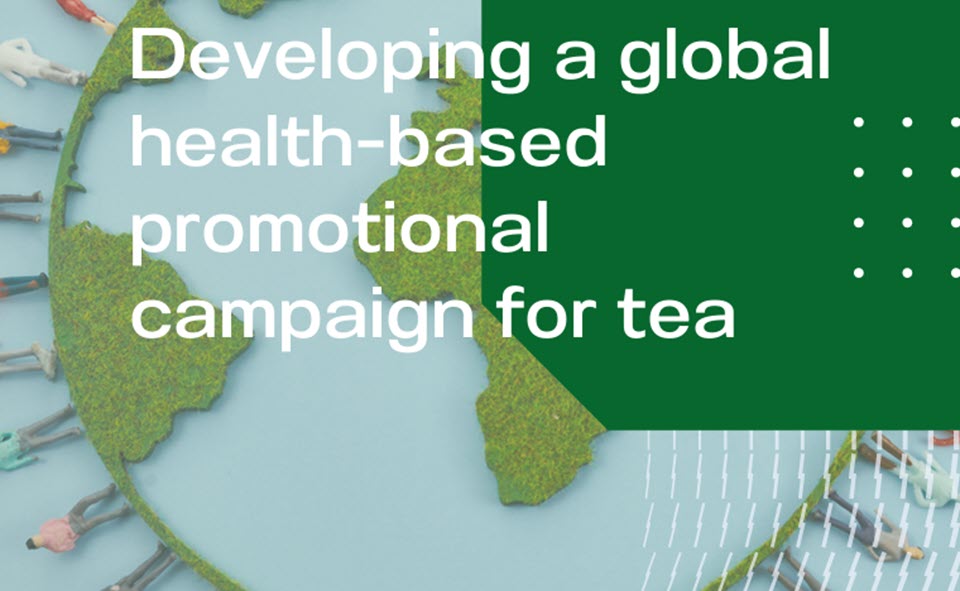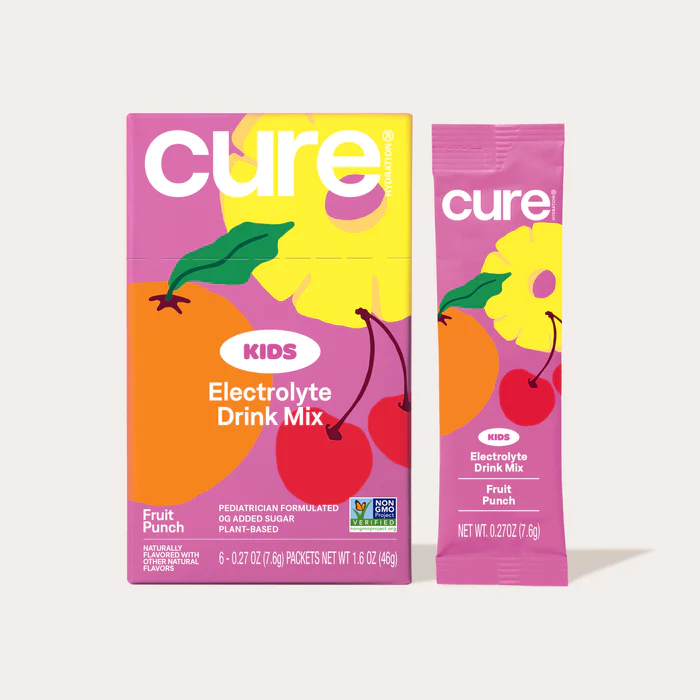Episode 158
Tea trade associations, research institutes, tea boards, tea brands, and the United Nations Intergovernmental Group on Tea (IGG/Tea) are organizing to collectively promote #TeaPower for International Tea Day, May 21. The online and event-based marketing program heralds the benefits of including tea in every high-energy fitness regimen, from organized sports and cycling to nature walks and solo ascents. Messaging targets youth, but the findings on dietary benefits and hydration are science-backed and essential to healthy living.
Shabnam Weber is president of the Tea and Herbal Association of Canada and co-chair of the United Nations IGG Working Group on Tea & Health, which developed the program. She discusses why #TeaPower is “the perfect pitch for younger generations looking to increase their performance and energy levels while staying healthy.”
Featured
Powered by RedCircle

A Youth-Focused Health and Fitness Campaign to Boost Consumption
By Dan Bolton
Shabnam Weber worked for 18 years in tea retail as president and CEO of Toronto-based Tea Emporium. She is also an accomplished tea educator, establishing the Academy of Tea in 2016 and developing the THAC Tea Sommelier program curriculum. Shabnam graduated from the University of Toronto with an Honors degree in Political Science and a post-graduate diploma in Psychology. She was named president of Canada’s Tea and Herbal Association in 2018.
In January, Shabnam traveled to Guwahati, Assam, as one of 44 country delegates at the recently concluded 25th Session of the United Nations FAO Intergovernmental Group on Tea (IGG Tea). During the past two years, as co-chair of the Working Group on Tea and Health, she tirelessly promoted the merits of a unified global campaign to make the benefits of drinking tea relevant to younger generations. She says that #TeaPower will generate a global buzz around tea and its role in improved fitness. “There is extensive evidence supporting tea benefits in sports and fitness performance and optimal hydration,” she explains. “These scientific findings provide the framework for a youth-focused campaign to encourage increased tea consumption.”
We need to remember that our competition is not ourselves. That’s a message for everybody in this industry: we are not the competition; the competition is other beverages. The only way for us to break through that noise is to work together.
Dan Bolton: I greatly admire your work as an ambassador and architect in tea marketing and an articulate tea health and wellness spokesperson. Thank you for taking the time to brief our readers on this initiative.
Shabnam Weber: It’s always a pleasure chatting with you. And you know, I also have to say a big thank you for your work within the industry, which is important.
Dan: Will you tell listeners how #TeaPower came about?
Shabnam: Tea Power came out of this continued conversation that we were having at FAO IGG on Tea about our desire to have a global generic promotion.
It’s a lofty endeavor and nice to say, but what do you focus on? How do you do it?
We decided that the focus should be tea and health. So, a couple of years ago, a new working group was formed, the working group on tea and health. As a group, we got together and had several meetings discussing what kind of promotion we wanted to do and deciding who our target should be.
Throwing a message out targeted at everybody is just too much and lacks focus – especially when you consider that the marketing and promotion world that we live in now is no longer print, television, and radio. It’s digital, and digital adopts and adapts. It’s a very, very noisy environment, which means that you have to be very targeted. So, the group decided that the focus should be on youth.
“Digital adopts and adapts. It’s a very, very noisy environment, which means that you have to be very targeted. So, the group decided that the focus should be on youth.”
– Shabnam Weber
Once that was decided, it was very clear to us that we had to reposition the tea and health messaging the industry has focused on, such as cardiovascular health, bone health, and diabetes.
These are all important and critical aspects of tea and its promotion. But they’re not what the youth are interested in because, thank goodness, they’re not concerned about cardiovascular health, diabetes, osteoporosis, etcetera, etcetera.
So, we made a list of what interests them, and sport and fitness were high on that list, as was beauty, hydration, and mental health.
We then needed to look at what scientific data met the requirements we had set for ourselves as a group, identifying the highest scientific standards that needed to be met.
The scientific papers we found that met all the requirements we had set, were sport and fitness, hydration, and mental health.
That’s a fast-forward version of what took us two years to put together.
Dan: So, what’s the next step?
Shabnam: What the working group is doing now is putting together the campaign, and that means putting together all the scientific evidence. Our regulators require scientific evidence if we’re going to make promotional claims. Then, we’re designing images, visual collateral, ideas, suggestions, hashtags, for everyone to share. This package will be available to all. I can’t stress enough the importance of hashtags and a unified message. We are in this very, very noisy world of social media and that is what will unite this campaign. The way that I’m going to promote tea power is going to be different than, let’s say, Sri Lanka might, or India might, or China might, or Kenya might because it needs to be focused on individual markets and what works in each of our respective markets.
What connects the whole conversation are hashtags. If we all share the same hashtag, we’re all sending out the same message. I reminded the group when we met in India just a few weeks ago that we, as an industry, managed to trend number one on Twitter in 2021. And we managed to do that because we all agreed to use the hashtag tea on International Tea Day.
That was at a time when Trump was president and dominating Twitter. The Syrian war was going on at the same time; yet we managed to break through that noise. And for a short time, we were trending number one on Twitter. It’s a really, really big deal for a food product without controversy to trend through the noise of social media.
I’m often asked why that occurred only in 2021. Unfortunately, the following year’s International Tea Day fell on a weekend, so nobody was celebrating simultaneously. 2024 is the perfect opportunity to get that going again.
Dan: So, we should all synchronize our social posts for T-Day, Tuesday, May 21.
Shabnam: Yes

Dan: Young people benefit most from tea health and fitness education. Daily tea consumption delivers on the promise of health and longevity. They know that eating plant-based food is a lifetime habit. It should be the same for tea. Society teaches people to put aside a little money for retirement in their 20s and buy life insurance when premiums are low. The working group has devised a great start to explain the benefits of healthy hydration, but this work is ongoing – in fact, it’s never-ending. Who will update the research and maintain momentum?
Shabnam: You’re absolutely right. To answer your question, one of the things that we did as a group was to agree on two key pillars within the IGG: sustainability and advocacy. Canada and Sri Lanka co-chair the advocacy group and the UK and Kenya co-chair sustainability.
The advocacy group is going to carry this forward.
Shabnam, will you rephrase the following graph?
Sport and fitness is the first campaign we’re rolling out. The purpose of the Advocacy Pillar is to continue campaigns like this and find other messages that we can unite in within the industry.
This is an opportunity to demonstrate the power of speaking with one voice. Our messaging might be slightly different, depending on markets, but to pick up on what you said earlier about youth and the power of lifelong habits, I think everyone needs to understand how important and critical this is to the industry.
Trying to change people’s habits later in life is hard. Children form most of their habits by the age of nine. That’s crazy. We did a study, a questionnaire a couple of years ago, asking young people in Canada between the ages of 18 and 24 when they started their tea-drinking habits. And it was in their homes before the age of nine. A psychological study at Stanford University found that if you haven’t tried sushi by age 39, there is a 95% chance you never will. As we age, we are less open to “novelty.”
See: The New Yorker, Open Season (1998)
Dan: The point is that until you have experienced sushi, it’s just a plate of raw fish, right?
Shabnam: Exactly.
If you haven’t experienced something, you’re less likely to try new things the older you get.
We really need to start learning and thinking about how we translate this for the consumer, “Joe Public.” They want to know, what does it mean for me? Translating it into something like sport and fitness and hydration and mental health, which are such big topics right now, is really important because we need to start living in the real world.
If we want to grow this industry, we must start thinking about the real world and how it talks, behaves, and is influenced. Making that connection is what we’re planning to do – no, not planning to do. We’re going to do it, and we’re going to kick it off for this International Tea Day.
That’s Tuesday, May 21
Dan: German grocery stores sell decaffeinated baby tea. It’s given to two-year-olds and three-year-olds, and they love it. Tea tastes good, right? If you introduce children to something good for them, they will develop a taste for it.
In the same way, it’s absolutely on point to explain the importance of hydration to young people. That’s a trending topic right now. Cure Hydration recently introduced Cure Kids, an electrolyte drink blending coconut water, pink Himalayan salt, and fruit juice powders.
Manufacturers mixing synthetically produced vitamins and minerals into bottled water blended with powdered juice concentrate to “cure” kids is the craziness that distracts the world from the benefits of natural plant-based beverages. We could undoubtedly make tea more convenient and appealing. Will you share your thoughts on promoting tea as the healthiest of health beverages?
Shabnam: Talking about vitamin water, at the last North American tea conference, there was a presentation on the fastest-growing beverage trend, which is water that’s been fortified. And I have to bang my head against the wall when I hear things like that because we are the original fortified water, we are the original vitamin water.
You know, I say this all the time: we have a product that comes out of the ground. It contains essential vitamins, it is full of minerals, it is full of stories, it is full of legends, and it is full of marketing opportunities; it’s got everything; we have to tell the story.
So, how do we tell that story? How do we take that product and as I said earlier, make it relevant in the real world? Well, the real world, as you just said, wants convenience. So, you know, if we want sport and fitness and hydration, and you know you’re going out for your marathon or half, whatever it is that you’re doing for sport and fitness, you’ll want something that has no sugar. You want something natural, no artificial anything. So why aren’t we taking pure tea? Why can’t we take tea that has been infused with water and bottle it? That’s the end of the story. But then, rather than bottle it as an ordinary iced tea, let’s market it as an energy drink, without any of the negatives of an energy drink, because the energy is natural. We’re not talking about moderate caffeination, zero sugar, no artificial colors, no artificial flavors, et cetera, et cetera. We sometimes get pigeonholed by what we know and how we always do things, right? How do you get somebody to buy a bottle of iced tea for sport and fitness? Well, how about you change the label on it and don’t call it iced tea? Call it a sport and fitness enhancer, for example.
Dan: That’s a creative solution. To me, it’s an opening for green. In the 1990s, green tea accounted for about 3% of tea imports in the US. Researchers published compelling evidence during that decade that green tea was good for you. Sales shot up, and green tea imports reached almost 20% of overall tea. They’ve fallen to around 14%. The single biggest complaint is that it fails to deliver on the promise of good health; what holds back green tea is the hassle of making it and the limited foods that can be paired. When you change the format to powder, matcha green tea has excellent culinary appeal, from salads to desserts, and is an energy boost in smoothies.
Can we use sports celebrity endorsements to refresh the image of green tea?
Shabnam: Wouldn’t it be amazing to have an NFL team that pours tea over the coach? Instead of the bucket of Gatorade. Honestly, the onus is on us to figure out how to not just re-market it, not by changing the name of tea but by restating its benefits. When I have this conversation with a handful of brands, I guarantee you that the answer will be, well, we’ve already done it; we’ve got iced tea, so you know, “let’s just push that out.”
That’s not enough. I don’t think it’s enough. I think there needs to be marketing around it to make that connection that this is an iced tea, but it’s your sports and fitness drink.
Dan: Consider a campaign around the marketing concept of “healthy hydration.” Hydration speaks to active athletes who ride bicycles, pump iron, and play football. Healthy hydration also rings a bell for neighborhood walkers, joggers, weekend baseball players, and yoga enthusiasts. You don’t have to put TEA in big letters on the label. Healthy Hydration can stand alone on the shelf, separate from Gatorade and Vitamin Water. In that category, green will stand out as seasonal and origin-specific with the taste and sweetness of the first flush.

Dan: How does the launch look at this point?
Shabnam: Well, the beauty of this campaign is that it is whatever you want to make of it.
I mean, at the end of the day, having everybody chip in for one global campaign wasn’t realistic, right?
One of the important elements when we considered how we wanted to roll this out was that we also needed to live in the real world and say, okay, how is this realistically going to happen? That means putting together this package that we’ll be delivering to all the members of the IGG. Then, every member will roll it out however they want to.
So, if, for example, somebody finds an athlete, as you’ve suggested, or a celebrity to endorse the campaign, then great.
If you want to do something as a live event, then that would be great. If it’s going to be purely social media, that’s fine as long as we’re maintaining some of the elements in terms of the messaging, sport, fitness, hydration, and then the added hashtags. That’s what’s going to make the connection for us. So, I think, as I said, the beauty of it will be to see how everybody translates this and how it’s going to roll out on the one hand differently, but then, at the same time, unified for this year’s International Tea Day.
Shabnam: We need to remember that our competition is not ourselves. That’s an essential message for everybody in this industry: we are not the competition; the competition is other beverages.
The only way for us to break through that noise is to work together. When we have these conversations at the IGG, it’s really good for all of us to work together. And the power we have working together is greater than we sometimes understand.
Download
FAO IGG/Tea Working Group Report: Tea & Health (PDF)
Powered by RedCircle
Share this post
Episode 158 | TeaPower is “the perfect pitch for younger generations looking to increase their performance and energy levels while staying healthy,” says Shabnam Weber, President of the Tea and Herbal Association of Canada and co-chair of the United Nations IGG Working Group on Tea & Health that developed the program. | 9 March 2024



